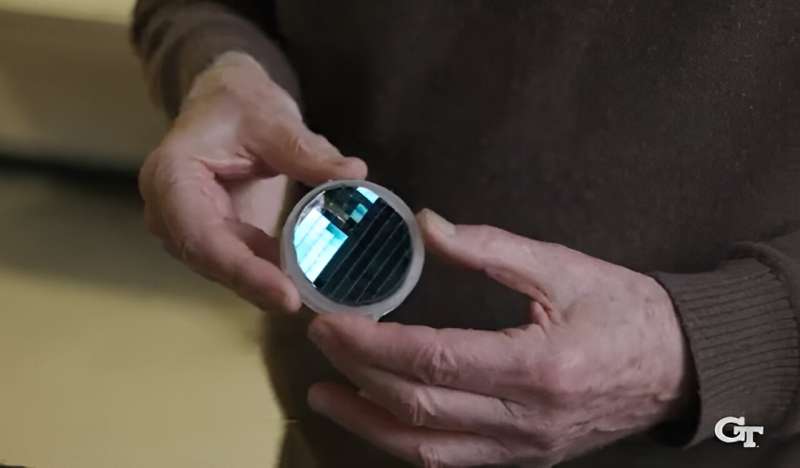Human beings can be defined using a ton of different adjectives, but at the same time, none do the job better than our pledge to grow under all circumstances. This unwavering commitment towards getting better, …
Human beings can be defined using a ton of different adjectives, but at the same time, none do the job better than our pledge to grow under all circumstances. This unwavering commitment towards getting better, no matter the situation, has brought the world some huge milestones, with technology emerging as quite a major member of the stated group. The reason why we hold technology in such a high regard is, by and large, predicated upon its skill-set, which guided us towards a reality that nobody could have ever imagined otherwise. Nevertheless, if we look beyond the surface for one hot second, it will become abundantly clear how the whole runner was also very much inspired from the way we applied those skills across a real world environment. The latter component, in fact, did a lot to give the creation a spectrum-wide, and as a result, initiated a full-blown tech revolution. Of course, the next thing this revolution did was to scale up the human experience through some outright unique avenues, but even after achieving such a monumental feat, technology will somehow continue to bring forth the right goods. The same has turned more and more evident in recent times, and assuming one new discovery ends up with the desired impact, it will only put that trend on a higher pedestal moving forward.
The researching team at Georgia Institute of Technology has successfully developed the world’s first functional semiconductor made from graphene, a single sheet of carbon atoms held together by the strongest bonds known. To give you some context, semiconductors are important ingredients to make any electronic device because they are the ones responsible for conducting electricity under specific conditions. So, where does the new development fit in? Well, coming at a time when silicon is reaching its limit in the face of increasingly faster computing and smaller electronic devices, the brand-new semiconductor starts by debunking a major belief that graphene-powered electronics can never work. This is because the stated element doesn’t have band-gap, which plays an essential role in letting the semiconductor switch on and off. Talk about what got the new semiconductor to address that limitation, things were actually put in motion after the researchers, responsible for the latest breakthrough, discovered how to grow graphene on silicon carbide wafers using special furnaces. Leveraging the same, they would manufacture epitaxial graphene, a single layer which grows on a crystal face of the silicon carbide. The move revealed that, if it was conceived properly, the epitaxial graphene was able to chemically bond to the silicon carbide and show semiconducting properties. In the next step, the team put atoms on the graphene to make them “donate” electrons, thus forming a technique called doping. The idea behind doing so was to observe whether the material could be a good semiconductor or not. Going by the available details, not only did the experiment show that their graphene semiconductor has 10 times greater mobility than silicon, but it also realized the whole process without damaging the material or its properties.
“We now have an extremely robust graphene semiconductor with 10 times the mobility of silicon, and which also has unique properties not available in silicon. But the story of our work for the past 10 years has been, ‘Can we get this material to be good enough to work? We were motivated by the hope of introducing three special properties of graphene into electronics. It’s an extremely robust material, one that can handle very large currents, and can do so without heating up and falling apart,” said Walter de Heer, Regents’ Professor of physics at Georgia Tech, and lead on this study.
The initial demonstration justified device’s greater mobility with an insight into electrons’ tendency to move with very low resistance, which, in electronics, translates to faster computing. De Heer explained the stated phenomenon with a more layman analogy.
“It’s like driving on a gravel road versus driving on a freeway. It’s more efficient, it doesn’t heat up as much, and it allows for higher speeds so that the electrons can move faster,” he said.
To give you the present picture, the new technology is, at present, the only two-dimensional semiconductor which has all the necessary properties to be used in nanoelectronics. Furthermore, its electrical properties are understood to be far superior to any other developed or under progress 2D semiconductors. However, looking into the future, there is a hope that epitaxial graphene can effectively spell the emergence of a different electronics reality, where we’ll have new technologies that are going to be better equipped to take advantage of the material’s unique properties. An example of the same would be how epitaxial graphene can empower those quantum mechanical wave properties of electrons to be utilized in a functional manner. This presents a big use case, as far as quantum computing is concerned.
“Our motivation for doing graphene electronics has been there for a long time, and the rest was just making it happen,” said de Heer “We had to learn how to treat the material, how to make it better and better, and finally how to measure the properties. That took a very, very long time.”
Anyway, now that it is here, the researching team is touting graphene as a replacement for silicon, which succeeded more traditional mediums like vacuum tubes, wires, and telegraphs.
“To me, this is like a Wright brothers moment,” said de Heer. “They built a plane that could fly 300 feet through the air. But the skeptics asked why the world would need flight when it already had fast trains and boats. But they persisted, and it was the beginning of a technology that can take people across oceans.”




